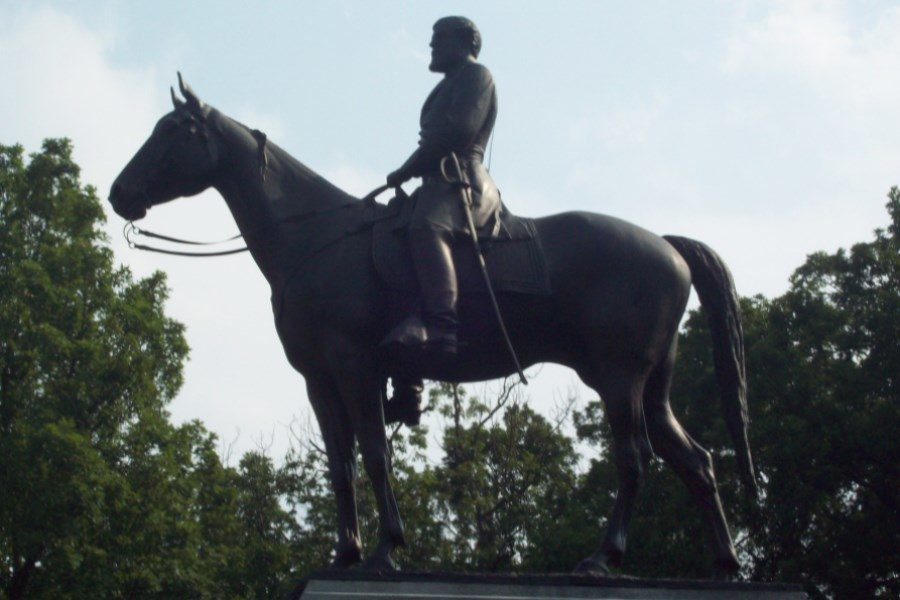OPINION: The Confederate Monuments
October 15, 2017
One of the more controversial issues of our time is the question of what should be done with statues honoring figures of the Confederacy. A large number of monuments have already been taken down, and there are more which may be taken down in the near future.
Many people are in favor of taking down the monuments, feeling that commemorating men who owned slaves is condoning slavery and racism. Others want the statues to remain; taking them down, they argue, is nothing short of an attempt to edit the unpleasant parts of history.
A case could be made either way, but the issue may in fact run deeper than whether or not to remove certain monuments.
The view that the monuments should be removed is the more prevalent view. Even some members of the Daughters of the Confederacy support it, as do the descendants of some Confederate generals. [“Confederate Monuments Are Coming Down Across the United States. Here’s a List.” nytimes.com. Retrieved 10/11/17. “The Monuments Must Go: An open letter from the great-great-grandsons of Stonewall Jackson.” slate.com. Retrieved 10/11/17.] Most of the Confederates that the statues represent were slaveholders, and they were rebelling against the United States in large part because they felt their society, based on slavery, was being threatened. Therefore, the argument goes, since they favorably portray men who owned slaves, publicly displaying the statues only serves to celebrate racism.
The fact that much of the opposition to the statues’ removal comes from the KKK and other white supremacist groups could be seen as reinforcing this assessment. In response to the argument that removing the monuments comes dangerously close to revising history, some suggest that they simply be put in museums, preserving the symbols of the past but at the same time not condoning them.
There are also good reasons why the monuments should not necessarily be taken down, however. The statues, even if they represent men who were slaveholders, do not all represent men who were racists. Granted, some of the Confederates were racists; Nathan Bedford Forrest, for example, was one of the first members of the KKK after the Civil War. There were others, though, who did not share these feelings.
The fact that many Confederates supported slavery is a serious strike against them which cannot be lightly dismissed. Still, several factors must be borne in mind when weighing their characters. They must be judged within the context of their time; they were raised in a time and place where slavery was considered normal and acceptable.
This does not entirely acquit them, but it means that care should be taken before condemning them. Promoting racism was not their only accomplishment; there is nothing wrong with acknowledging them for their other works. Many of them were moral individuals who were trying to do what they honestly believed to be right. Of course, they were wrong in supporting slavery and attempting to break away from their country, but they thought that they were doing the right thing. The monuments do not celebrate slavery plain and simple. Rather, they represent the sacrifice and bravery exhibited by the Confederates in defense of a cause which they believed to be right. There is nothing wrong with commemorating this.
Another valid argument can be raised as to why the monuments should not be removed. Trying to eradicate all statues reminding us of the Confederacy sets a dangerous precedent.
It almost seems like an attempt to erase history, to try to make it as if the Southern slave culture of the 1800s never happened. As unpleasant as this part of history is, it is important to remember it, as it is important to remember all history. If we forget history and the lessons it teaches, then we cannot learn from it; we are left vulnerable to threats that could have been avoided by applying the lessons of history.
In his introduction to Ivanhoe, A. N. Wilson says of Sir Walter Scott, “”He saw, with terror, his nation being made to destroy its past; and he recognized (this is the great importance of Ivanhoe) that a nation without links with its past is the victim of every lying dictatorship which could come along.” This is the real danger of the removal of the monuments. It is trying to destroy the evil of a previous age, but all it really does is leave our culture weaker and more susceptible to the evils of this age.
The question of whether or not the statues should be taken down may be overshadowing another problem. The real issue with the removal of the statues is not so much the arguments that can be raised about the potential dangers of forgetting history; the real problem is the way in which all the Confederates are put together in the same category with no thought being given to how similar their views actually were.
Many Confederates were racists, and were not the sort of people one would want to honor. Others were not racists, but were admirable, albeit misguided, individuals. Thomas “Stonewall” Jackson, for instance, had a Sunday school for black children, even though it was against the law. [“Jackson’s ‘colored Sunday school’ class. washingtontimes.com. Retrieved 10/4/2017.]
Robert E. Lee, while he owned slaves himself, was clearly far from happy with the system, writing, “In this enlightened age, there are few I believe, but what will acknowledge, that slavery as an institution, is a moral & political evil in any country.” [historynet.com/robert-e-lee-quotes. Retrieved 10/4/2017.]
After the Civil War was over, he said,
“So far from engaging in a war to perpetuate slavery, I am rejoiced that slavery is abolished. I believe it will be greatly for the interests of the South. So fully am I satisfied of this, as regards Virginia especially, that I would cheerfully have lost all I have lost by the war, and have suffered all I have suffered, to have this object obtained.” [Ibid.]
Should a statue of one of the KKK’s founders really go in the same category as the plaque for a tree that was planted by Robert E. Lee? The answer to this question is no.
Yes, Lee had some serious faults. Yes, all of the Confederates had serious faults, but they were not all guilty of the same faults. (It should also be remembered that, even though the right and wrong of the two sides was clear cut, it was not simply good people fighting against bad people; many of those who fought for the Union had major flaws as well.)
Maybe the statues should come down, maybe only a select few should come down, or maybe they should all remain standing, but no matter what happens with them, they should not be judged collectively.
They represent different people, with different characters. To say all of the Confederates were racists, without actually considering whether they each individually were or not, is to commit the same error that racism itself is based on: to categorize people on a group basis, ignoring the qualities of the individual.






